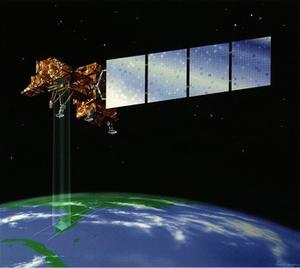EpidemicsRemote satellites-based early warning system for cholera epidemics
Researchers have established new techniques – based on remote satellites imagery — for predicting the severity of seasonal cholera epidemics months before they occur and with a greater degree of accuracy than other methods based on remote satellite imaging. The findings of the research may provide the essential lead time to strengthen intervention efforts before the outbreak of cholera in endemic regions.

Using satellite images to predict cholera outbreak intensity months in advance // Source: commons.wikimedia.org
In two recently published papers, Tufts University School of Engineering researchers have established new techniques for predicting the severity of seasonal cholera epidemics months before they occur and with a greater degree of accuracy than other methods based on remote satellite imaging. Taken together, findings from these two papers may provide the essential lead time to strengthen intervention efforts before the outbreak of cholera in endemic regions. A Tufts University release reports that cholera is an acute diarrheal disease caused by the bacterium Vibrio cholerae. It occurs in the spring and fall in the Bengal delta. In past research, scientists have used chlorophyll, a surrogate for phytoplankton, as a measuring stick for cholera. The cholera bacteria lives and thrives among phytoplankton and zooplankton.
In the June issue of Remote Sensing Letters, Antarpreet Jutla, then a doctoral student at Tufts School of Engineering and now on the faculty at West Virginia University, was lead author on a study that measured chlorophyll and other organic matter.
The team, which was led by Shafiqul Islam, Ph.D., professor of civil and environmental engineering at Tufts School of Engineering, used satellite data to measure chlorophyll and algae, organic substances, and flora that also support growth of the cholera bacteria.
Using satellite images, the researchers created a “satellite water marker” (SWM) index to estimate the presence of organic matter including chlorophyll and plankton based on wavelength measurements.
A predominance of green, plankton-rich water — which is measured at 555 nanometers — indicated the degree to which the waters contained chlorophyll, plankton, and other impurities. Clear, blue water — measured at 412 nanometers — indicated low levels of these impurities, according to the researchers.
The researchers targeted the spring epidemic, which is a coastal phenomenon caused by water flow into the delta from three principal rivers — the Brahmaputra, Ganges, and Meghna. Unlike the spring outbreak, the fall epidemic is linked to flooding which follows the monsoons and subsequent breakdown of sanitary conditions rather than costal conditions.
In their study, the researchers correlated cholera incidence from the International Center for Diarrheal Disease Research, Bangladesh from 1997 to 2010 with satellite imaging data from the National Aeronautics and Space Administration for the same time period.
They discovered a relationship between SWM index measurements taken in early winter — from October to December — and the severity of cholera epidemics in the following spring. “In short, the index for chlorophyll along with readings for other biological matter in early winter indicated severity of cholera incidences in the spring,” says Jutla.
The SWM is a more accurate predictor of cholera than the algorithm that measures strictly chlorophyll levels because it also measures a broader range of organic matter, says Islam.
“The probability for error in this index-based estimate is less than 10 percent while the error in using the chlorophyll-based algorithm is about 30 percent,” says Islam. To validate their hypothesis that the index can be used in coastal areas outside of the Bengal Delta, the team applied the SWM to coastal waters around Mozambique’s capital city, Maputo.
In a separate paper which was published online in the journal Environmental Modeling & Software, ahead of the 1 September print edition, Jutla, Islam, and Akanda showed that air temperature in the Himalayan foothills can also be a factor in predicting spring cholera.
The researchers collected air temperature data during the early winter months (October-December) in the foothills. In seasons of warm temperature, the foothills experienced higher than normal precipitation and early snow melt. This caused higher than normal water flow in the Ganges, Brahmaputra, and Meghna Rivers and eventually into the Bay of Bengal during the drought period. Higher river flow into the delta impedes plankton-carrying seawater from moving inland
When correlated with satellite data on chlorophyll levels, the researchers found that air temperatures could lessen the extent of cholera even when chlorophyll levels were high.
— Read more in Antarpreet Jutla et al., “A Water Marker Monitored by Satellites to Predict Seasonal Endemic Cholera,” Islam, Remote Sensing Letters 4, no. 8 (3 June 2013) (DOI: 10.1080/2150704X.2013.802097); and Antarpreet S. Jutla et al., “A Framework for Predicting Endemic Cholera Using Satellite Derived Environmental Determinants” Environmental Modeling & Software 47 (September 2013): 148-58 (doi.org/10.1016/j.envsoft.2013.05.008)
